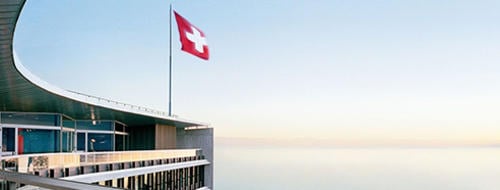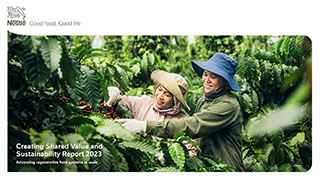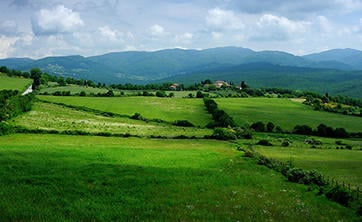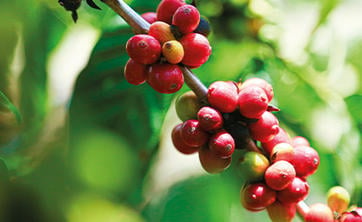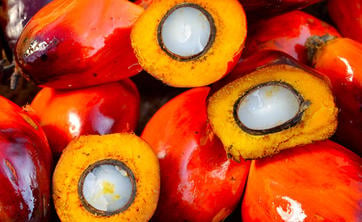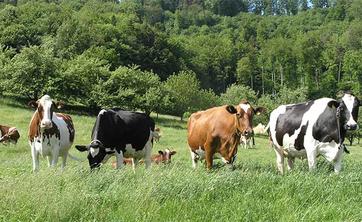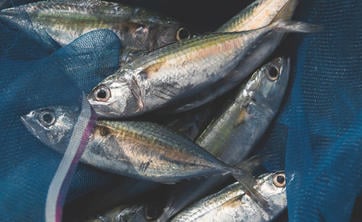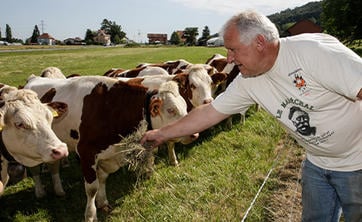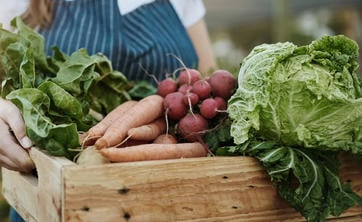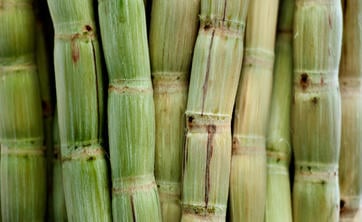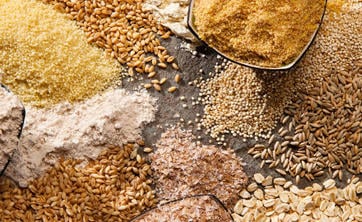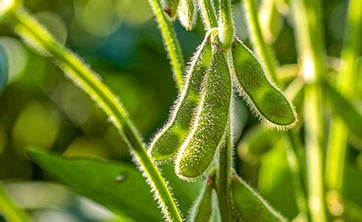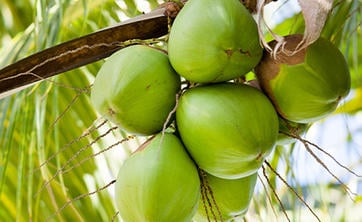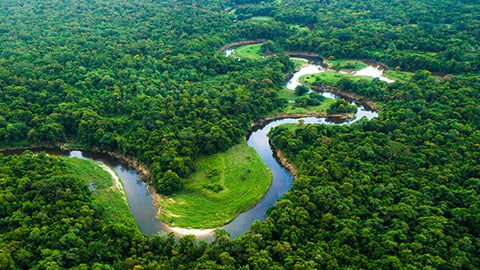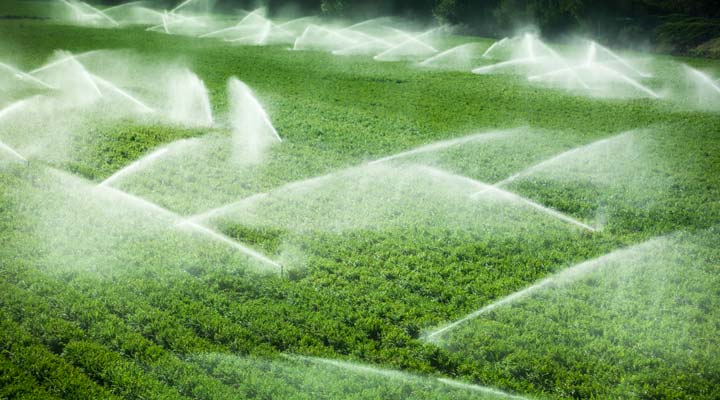Dairy supply chain

Dairy is our biggest raw material by volume, with many milk and milk-derived ingredients used in our products. These include dairy and infant nutrition products, as well as ice cream, beverages and confectionery.
The key challenges that arise in dairy supply chains relate to greenhouse gas (GHG) emissions and animal welfare, issues we are committed to addressing in collaboration with farmers and suppliers.
Our approach to sourcing dairy responsibly
We source dairy in two ways.
- Dairy ingredients such as milk powders, whey or lactose are bought from dairy cooperatives
- Fresh milk is sourced directly from farmers before being processed in Nestlé factories. We work with over 200 000 dairy farmers directly in 27 countries
Our overall dairy strategy is driven by our Responsible Sourcing Standard, our internal Rethink Dairy initiative and the external industrywide Sustainable Dairy Partnership (SDP). These initiatives play an essential role in how we source and produce nutritious dairy ingredients as part of our net zero journey.
Our Rethink Dairy initiative aims to continuously improve our sourcing operations and to transparently share our progress with key stakeholders, including consumers. It encompasses:
-
Quality Delivering full milk traceability and ensuring food safety, through the use of digital tools and third-party audits.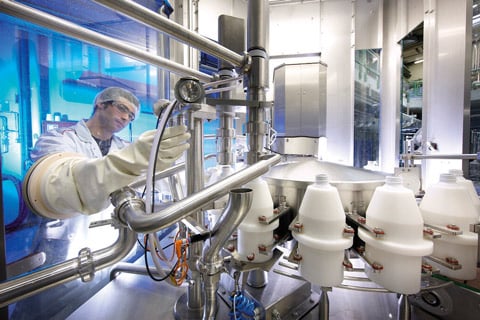
-
Agriculture Working with our dairy farmers to continuously improve local production systems. We train farmers and support them in adopting practices that can optimize productivity and improve incomes. This continuous improvement is closely linked with our environmental commitments.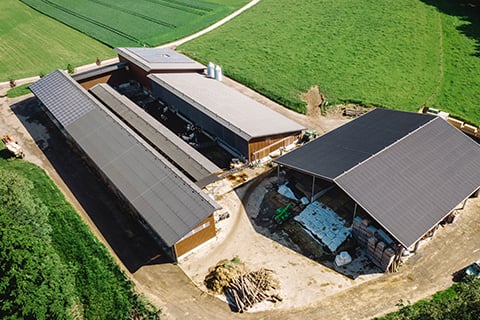
-
Nature Transitioning to regenerative dairy farming systems – including the carbon footprint, water stewardship, soil health and biodiversity in our dairy value chain, and using recyclable or reusable packaging.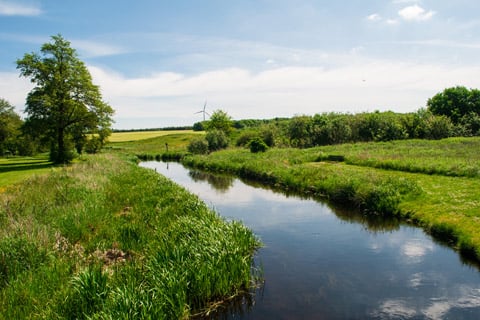
-
Animal Welfare Our Responsible Sourcing Standard lays out our sourcing requirements for dairy.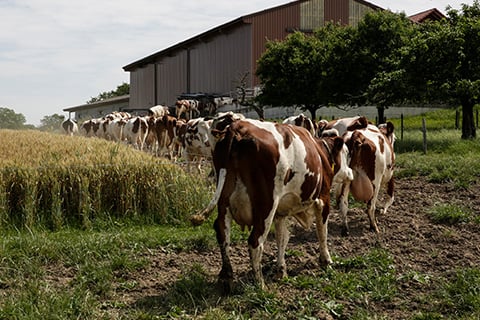
Sustainability in practice
Working to reduce emissions in our dairy supply
Dairy is Nestlé’s largest single source of Scope 3 greenhouse gas emissions, accounting for around 21% of our total. Methane – produced when dairy cows digest their feed – is responsible for 40% of total emissions from our dairy operations. Through the Nestlé Institute of Agricultural Sciences, we are growing our expertise in the areas of plant science, agricultural systems and dairy livestock. When it comes to innovating for dairy, we are focused on reducing greenhouse gas emissions in the areas of cow feed and manure management.
One way we can reduce emissions is through implementing solutions with our dairy suppliers. In 2023, we developed and implemented a new approach to collect dairy emissions data and measure impacts in markets around the world. Using this new data, we have been working with suppliers to adopt new ways to reduce emissions. Our teams have also been working with farmers to create plans for climate, methane and regenerative agriculture.
We have also established a dedicated team to work with our largest dairy derivatives suppliers. Our work focuses on improving diets, which can also help to reduce dairy emissions in the derivatives supply chain.
The Nestlé Institute of Agricultural Sciences continues to research new ways to reduce dairy emissions. These include methane-reducing feed supplements, manure management and improved diets. Our scientists look at how these solutions can be used alongside other approaches such as the management of the dairy herd, as well as efficient farm management. The most promising solutions are tested on research farms before being deployed more broadly. The Institute works in close partnership with external partners including farmers, universities, research organizations, start-ups and industry partners.
In the U.S. we have been deploying vermicomposting, using worms to naturally degrade manure with lower methane production – replacing the need to capture and store the gas. The worms also remove up to 99% of wastewater contaminants and generate castings that can be used as fertilizer to improve soil health.
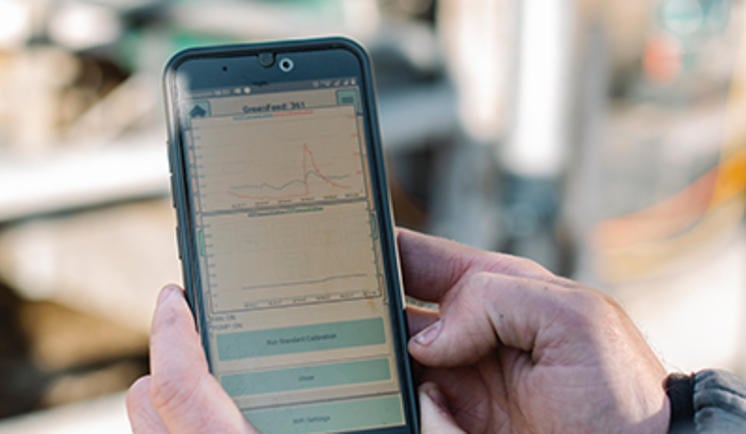
Toward responsible sourcing and traceability
Independent auditors carry out assessments of the dairy farmers involved in our supply chain against our Responsible Sourcing Standard, focusing on animal welfare, labor practices and environmental impact.
To drive industry-wide transparency, we have published the list of our Tier 1 dairy ingredients suppliers (pdf, 200Kb) and the list of our fresh milk suppliers (pdf, 1Mb) in our supply chain, along with their countries of origin.
Digital technologies have the capacity to transform the dairy industry. We have digitized the traceability of our milk, from farm to factory, using a tool called the Global Milk Solution. It includes GPS tracking and route optimization to ensure transparency and transport efficiency. We are currently piloting new tools including calculating GHG emissions per farm or liter of milk to track progress and ensure continuous improvement. We also monitor regenerative agriculture and animal welfare practices.
Supporting safe labor practices in dairy
Supporting fair, safe and healthy working environment for farm workers is a priority for Nestlé. For several years, Nestlé has collaborated with partners and stakeholders throughout our dairy supply chain to enhance farm workforce development in United States dairy production.
The United States National Milk Producers Federation has also developed an on-farm evaluation tool to support farmers in understanding human resources and safety management best practices. The tool aids implementation of these best practices and tracks improvements over time.
Nestlé also funds multiple projects to engage dairy workers, managers and owners in collaboratively enhancing the farm working environment. The projects focus on building trust and improving job satisfaction, worker safety and productivity.

